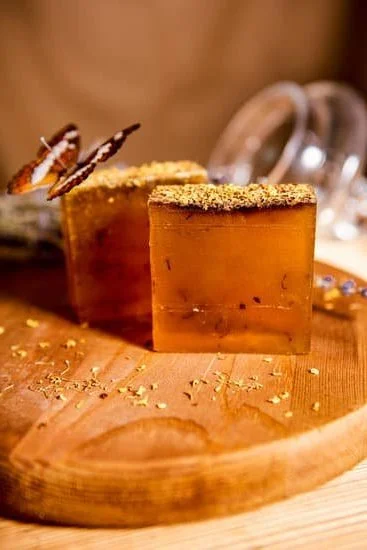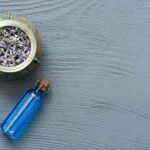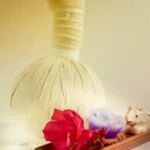Aromatherapy massage full body is a powerful and holistic approach to relaxation and healing. This introductory section will explore the concept of aromatherapy and its benefits in enhancing a massage experience.
Aromatherapy, dating back to ancient civilizations, involves the use of essential oils derived from plants for therapeutic purposes. This practice has been passed down through generations and is now recognized as an effective way to promote physical and emotional well-being. When combined with massage, aromatherapy creates a unique sensory experience that can deeply relax the body and mind.
The power of scent cannot be underestimated in aromatherapy massage. Different essential oils have distinct properties that can evoke specific emotions or sensations in the body. For example, lavender oil is often used for its calming effects, while peppermint oil can invigorate and energize. By incorporating these oils into a full body massage, therapists are able to target different areas of concern and create a tailored treatment for each individual.
In the following sections of this article, we will delve deeper into the history and origins of aromatherapy, understand the benefits of a full body massage, explore various aromatherapy techniques, provide guidance on selecting essential oils, explain the stages of an aromatherapy massage, discuss potential risks and precautions, address frequently asked questions about this therapy, and conclude by summarizing the key points discussed throughout.
So let’s embark on this aromatic journey together and discover the rejuvenating wonders of an aromatherapy massage full body.
Understanding Aromatherapy
One of the fundamental aspects of aromatherapy massage full body is the use of essential oils. These oils have been utilized for centuries for their healing and relaxation properties, making aromatherapy massage a valuable practice in promoting overall well-being. In this section, we will explore the history and origins of aromatherapy, tracing back its roots to ancient civilizations that first discovered the power of essential oils.
The Ancient Origins
Aromatherapy can be traced back thousands of years to ancient civilizations such as Egypt, China, India, and Greece. These cultures recognized the therapeutic benefits of certain plant extracts and used them in various rituals and medicinal practices. Egyptians were particularly known for their advanced knowledge and usage of essential oils in religious ceremonies, skincare treatments, and embalming processes. The Greeks also contributed significantly to the field with renowned scholars like Hippocrates and Galen using aromatic herbs for healing purposes.
The Birth of Modern Aromatherapy
While ancient civilizations laid the foundation for aromatherapy, it was not until the 20th century that modern aromatherapy as we know it took shape. In 1937, French chemist René-Maurice Gattefossé coined the term “aromatherapy” after accidentally discovering its healing effects on his burnt hand through lavender oil. This incident sparked further research into essential oils’ therapeutic properties and led to widespread recognition of their potential in healthcare.
The Science Behind Aromatherapy
The effectiveness of aromatherapy cannot solely be attributed to its historical usage. Scientific studies conducted over recent decades have shed light on how essential oils interact with our bodies at a molecular level.
The aroma molecules from essential oils stimulate receptors in our olfactory system, communicating directly with our limbic system – the area responsible for regulating emotions and memory. This connection between scent and emotions forms the basis for utilizing specific essential oils in aromatherapy massage to promote relaxation, reduce stress, and enhance overall well-being.
Understanding the origins and science behind aromatherapy gives us a deeper appreciation for its therapeutic benefits. The rich history of essential oils and their usage across different cultures highlights the enduring appeal of this practice as a means of healing and relaxation. In the next section, we will explore how scent plays a crucial role in aromatherapy massage and how specific essential oils can evoke different emotions and sensations.
The Power of Scent
Aromatherapy massage is a unique form of massage that combines the therapeutic benefits of touch with the powerful properties of essential oils. The use of scent in aromatherapy plays a crucial role in enhancing the overall massage experience and promoting relaxation, rejuvenation, and healing. Different essential oils have distinct scents and properties that can evoke specific emotions and sensations, further enhancing the effects of the massage.
Essential oils are derived from various plant parts such as flowers, leaves, bark, roots, or seeds through processes like steam distillation or cold pressing. Each essential oil has its own unique aroma profile and therapeutic properties.
For example, lavender essential oil is known for its calming and soothing properties, making it ideal for those looking to relax and unwind during their massage. On the other hand, peppermint essential oil has invigorating and energizing properties that can help combat fatigue and increase alertness.
When these essential oils are used in an aromatherapy massage, they are usually diluted with a carrier oil before being applied to the skin or diffused into the air. As the scent is inhaled or absorbed through the skin during the massage, it stimulates the olfactory system and triggers chemical reactions in the brain. These reactions can have profound effects on a person’s mood, emotions, memory, and overall well-being.
| Essential Oil | Scent | Emotional Effects |
|---|---|---|
| Lavender | Floral, herbaceous | Calming, relaxing |
| Peppermint | Minty, refreshing | Energizing, invigorating |
| Chamomile | Sweet, fruity | Soothing, comforting |
| Lemon | Citrusy, uplifting | Refreshing, revitalizing |
In addition to the emotional effects, specific essential oils can also provide physical benefits during a massage. For example, eucalyptus essential oil has antibacterial and decongestant properties that can help with respiratory conditions and relieve muscle pain. Meanwhile, rosemary essential oil is known for its stimulating and circulatory effects, making it beneficial for reducing muscle tension and promoting blood flow.
Overall, the power of scent in aromatherapy massage should not be underestimated. By carefully selecting and blending essential oils based on their scents and therapeutic properties, both massage therapists and clients can customize each session to suit individual needs and desired outcomes. Whether one seeks relaxation or an energy boost, the right combination of scents can enhance the massage experience and contribute to holistic healing.
The Benefits of Full Body Massage
A full body massage can offer numerous benefits to both physical and mental well-being. By targeting all areas of the body, a full body massage can provide deep relaxation, relieve stress, improve blood circulation, reduce pain, and promote an overall sense of relaxation and rejuvenation. Here are some of the key advantages of a full body massage:
- Stress Relief: One of the primary benefits of a full body massage is its ability to reduce stress levels. Through the application of different massage techniques, such as kneading and stroking, tension in the muscles is released, promoting relaxation and reducing feelings of anxiety.
- Improved Blood Circulation: Full body massage stimulates blood flow throughout the entire body. This increased circulation helps deliver oxygen and nutrients to the muscles and organs, improving overall health. Furthermore, improved blood flow can aid in the removal of toxins from the body.
- Pain Reduction: Full body massage can be effective in relieving pain caused by muscle tension or other underlying conditions such as arthritis or fibromyalgia. Massage techniques help release tense muscles, decrease inflammation, and promote healing.
- Overall Relaxation: A full body massage not only targets specific areas but also provides relaxation for the whole body. The release of endorphins during a massage promotes a feeling of well-being and tranquility throughout the mind and body.
To maximize the benefits of a full body massage, incorporating aromatherapy into the session can enhance its effectiveness even further. Aromatherapy involves using essential oils derived from plants to support physical and emotional wellness. The use of specific essential oils during a massage can complement the therapeutic effects by adding an olfactory dimension to relaxation.
To experience these benefits firsthand, it is important to choose an experienced masseuse or spa that specializes in aromatherapy massages. Before your appointment, communicate your needs and preferences with your therapist so they can personalize your experience accordingly.
Aromatherapy Massage Techniques
During an aromatherapy massage, specific techniques are employed to combine the benefits of touch therapy with the therapeutic properties of essential oils. These techniques are designed to enhance relaxation, promote circulation, reduce muscle tension, and stimulate the natural healing processes of the body. Understanding these massage techniques can help individuals gain a better appreciation for how they contribute to the overall experience.
One commonly used technique in aromatherapy massage is effleurage. This technique involves long sweeping strokes that glide over the surface of the skin using either light or firm pressure. Effleurage helps to warm up the muscles and prepare them for deeper manipulation. It also aids in spreading the essential oils evenly across the body, allowing their aromatic molecules to be more readily absorbed through the skin.
Another technique utilized in aromatherapy massage is petrissage. Petrissage involves kneading and squeezing motions performed on soft tissues such as muscles and skin. This technique helps to release muscle tension and increase blood flow to areas that may be congested or tight. Petrissage can also help break down adhesions or knots within the muscle fibers, promoting greater flexibility and range of motion.
Lymphatic drainage is another important technique used in aromatherapy massage. The lymphatic system is responsible for removing toxins from various parts of the body, and lymphatic drainage massage helps facilitate this process. Through gentle rhythmic movements that follow the path of lymph flow, this technique encourages proper lymph circulation and supports immune function. Lymphatic drainage can also help reduce swelling by clearing excess fluid from tissues.
In an aromatherapy massage session, these techniques are often combined seamlessly by skilled therapists to provide a comprehensive treatment that addresses both physical and emotional well-being. By incorporating specific essential oils into the massage, the therapeutic effects of these techniques are further enhanced, offering a deeply relaxing and healing experience.
Choosing the Right Essential Oils
In order to maximize the benefits of an aromatherapy massage, it is crucial to select the most appropriate essential oils based on individual needs and desired outcomes. The fragrance of essential oils not only enhances relaxation, but also has therapeutic effects on both the mind and body. Each essential oil possesses unique properties that can evoke different emotions and sensations, making it important to choose oils that align with one’s desired effects.
One popular essential oil for relaxation is lavender. Known for its calming properties, lavender oil can help reduce stress levels, promote sleep quality, and relieve anxiety. It is often used in massage therapy to induce a state of tranquility and deep relaxation.
Another essential oil commonly used for its energizing properties is peppermint. Its refreshing aroma can help improve focus and concentration, boost energy levels, and provide mental clarity. When used in massage, peppermint oil can invigorate the senses and alleviate fatigue.
For those seeking pain relief during their full body massage, eucalyptus oil is a popular choice. It possesses analgesic properties that can help reduce inflammation and soreness in muscles and joints.
Furthermore, citrus essential oils like orange or lemon can be uplifting and mood-boosting due to their bright and invigorating scents. They are often used to combat feelings of depression or sadness during a massage session.
| Essential Oil | Benefits |
|---|---|
| Lavender | Relaxation, stress reduction, improved sleep |
| Peppermint | Energizing, mental clarity, improved focus |
| Eucalyptus | Pain relief, reduced inflammation, muscle relaxation |
| Orange/Lemon | Mood-boosting, uplifting, combatting depression |
It is important to note that essential oils should be used with caution and in appropriate dilutions. Some individuals may have allergies or sensitivities to certain oils, so it is recommended to perform a patch test before using any new oil. Additionally, pregnant women and individuals with specific medical conditions should consult with a qualified aromatherapist or healthcare professional to ensure the suitability and safety of chosen essential oils.
By carefully selecting the right essential oils based on individual needs and desired outcomes, one can enhance their massage experience and reap the numerous benefits of aromatherapy for both the mind and body.
The Stages of an Aromatherapy Massage
An aromatherapy massage involves several stages that contribute to its overall effectiveness in promoting relaxation and healing. Understanding these stages can help individuals fully immerse themselves in the experience and reap the benefits offered by this therapeutic practice.
The first stage of an aromatherapy massage is the initial consultation. During this step, the massage therapist will gather information about any existing medical conditions, allergies, or concerns that may affect the choice of essential oils or specific massage techniques. This consultation also provides an opportunity for clients to express their preferences regarding pressure intensity, areas of focus, and desired outcomes.
After the initial consultation, the next stage involves selecting appropriate essential oils. Depending on individual needs and goals, specific essential oils will be chosen to enhance relaxation or address certain conditions such as muscle tension or stress. Essential oils like lavender are commonly used for their calming effects, while eucalyptus and peppermint offer invigorating sensations.
Once the essential oils have been selected, the actual massage techniques are performed. A variety of traditional massage techniques are used during an aromatherapy session to target different areas of tension or discomfort. Effleurage involves long sweeping strokes across the body to warm up the muscles and induce relaxation. Petrissage utilizes kneading and squeezing motions to release deeper tensions. Lymphatic drainage is another technique used to stimulate lymph flow and detoxify the body.
Finally, aftercare is an important stage in an aromatherapy massage. Clients are advised to drink plenty of water following their session to aid in flushing out toxins released during the massage. It is also recommended to avoid strenuous activities or stressful situations immediately after a session for maximum relaxation benefits.
Understanding each stage of an aromatherapy massage allows individuals to fully appreciate the thoughtfulness and effectiveness of this therapeutic practice. From the initial consultation to the selection of essential oils, the actual massage techniques, and post-massage aftercare, each stage contributes to an overall rejuvenating and healing experience.
Potential Risks and Precautions
Aromatherapy massage can be a soothing and rejuvenating experience, but it is important to be aware of the potential risks and precautions associated with this practice. While essential oils used in aromatherapy are generally safe for most people, there are certain contraindications and precautions that should be taken into consideration.
One major concern when it comes to aromatherapy massage is allergies. Some individuals may have allergic reactions to certain essential oils. It is recommended to do a patch test before using any new essential oil or receiving an aromatherapy massage.
Apply a small amount of diluted oil on the skin and wait for at least 24 hours to see if any adverse reactions occur. If you experience redness, itching, or swelling, it is best to avoid that particular oil or consult with a healthcare professional.
Pregnant women should also exercise caution when considering aromatherapy massage. Some essential oils can potentially cause harm or complications during pregnancy. It is crucial to consult with a qualified healthcare provider before receiving an aromatherapy massage during pregnancy. They can provide guidance on which essential oils are safe to use and which ones should be avoided.
Additionally, individuals with specific medical conditions should be cautious when using certain essential oils in an aromatherapy massage. For example, people with asthma or other respiratory conditions might want to avoid inhaling strong aromatic oils that could trigger breathing difficulties. Those with sensitive skin or conditions such as eczema may need to dilute the essential oils more than usual or choose gentler options.
By being aware of these potential contraindications and precautions, individuals can ensure the safety and effectiveness of their aromatherapy massage experience. It’s always a good idea to consult with a qualified aromatherapist or healthcare professional who can provide personalized advice based on individual needs and circumstances.
Frequently Asked Questions
Duration of the Massage
One common question that arises when it comes to aromatherapy massage full body is the duration of the massage. The length of an aromatherapy massage can vary depending on individual preferences and needs. Typically, sessions can range from 60 to 90 minutes. During this time, the massage therapist will work on different areas of the body using a variety of techniques to promote relaxation, relieve tension, and enhance overall well-being.
It’s important to communicate with your massage therapist about any specific concerns or areas of focus you may have. This will help them tailor the session to your needs and ensure that you receive the maximum benefits from the aromatherapy massage. Additionally, if you are short on time but still want to experience the benefits of aromatherapy, some therapists also offer shorter sessions or targeted treatments for specific areas such as back or neck.
Expected Results
The expected results from an aromatherapy massage full body may vary depending on individual factors and goals. However, common benefits include stress relief, improved circulation, reduced muscle tension, enhanced mood, and overall relaxation. The combination of soothing massage techniques and carefully selected essential oils can provide a holistic experience that addresses both physical and mental well-being.
It’s important to remember that everyone responds differently to aromatherapy massage. Some people may feel an immediate sense of calm and rejuvenation after a single session, while others may require multiple sessions before experiencing significant results. Aromatherapy massage is not a “quick fix,” but rather a complementary therapy that promotes long-term well-being when incorporated into a regular self-care routine.
Number of Sessions Needed
The number of sessions needed for desired effects in aromatherapy massage full body can depend on various factors such as individual needs, health conditions, and personal goals. For general relaxation purposes or occasional wellness maintenance, having an aromatherapy massage once a month or every few weeks may be sufficient. However, for specific health concerns or chronic conditions, a more frequent schedule of weekly or bi-weekly sessions might be recommended.
It is important to discuss your expectations and desired outcomes with your massage therapist. They can provide guidance on the ideal frequency and duration of sessions based on their professional assessment and your individual needs. Remember that consistency is key when it comes to achieving lasting benefits from aromatherapy massage, so it’s important to commit to regular sessions as part of your self-care routine.
Conclusion
In conclusion, aromatherapy massage is a powerful and holistic approach to relaxation and healing. Throughout this article, we have explored the origins of aromatherapy, the power of scent, the benefits of a full body massage, the techniques used in an aromatherapy massage, choosing the right essential oils, the stages of an aromatherapy massage, potential risks and precautions, and frequently asked questions.
Aromatherapy massage combines the therapeutic effects of touch with the aromatic properties of essential oils to provide a deeply rejuvenating experience. The use of specific oils can evoke different emotions and sensations, enhancing relaxation and promoting overall well-being. The various techniques used in an aromatherapy massage work synergistically to release tension, improve blood circulation, reduce pain, and induce deep relaxation.
When considering undergoing an aromatherapy massage full body session, it is important to prioritize safety. Researching potential contraindications such as allergies or specific medical conditions that may require adjustments or avoidance of certain oils is crucial. Additionally, pregnant individuals should consult with their healthcare provider before receiving an aromatherapy massage.
Frequently Asked Questions
What happens in a full body aromatherapy massage?
In a full body aromatherapy massage, essential oils are used in combination with traditional massage techniques to provide a holistic experience. The client is typically asked to choose their desired essential oil or blend based on its therapeutic properties or personal preference.
The massage therapist will then apply the chosen oil, diluted in a carrier oil, to the client’s skin through slow and gentle strokes. As the therapist works through each area of the body, the client can benefit not only from the physical effects of the massage but also from the inhalation of the aromatic oils, which can have various relaxation or energizing effects.
What is the difference between aromatherapy massage and full body massage?
The main difference between an aromatherapy massage and a full body massage lies in the use of essential oils. Aromatherapy massage specifically incorporates these oils to enhance both physical and emotional well-being.
While both types of massages involve applying pressure and manipulation of muscles and tissues, a full body massage can be done without incorporating essential oils if desired. Aromatherapy massages take advantage of the combined benefits derived from both touch therapy and aromatics.
What are the disadvantages of aromatherapy massage?
While aromatherapy massages have numerous advantages, there are some potential drawbacks to consider as well. Firstly, since many essential oils are highly concentrated substances, certain individuals may experience allergic reactions or skin sensitivities when they come into contact with specific oils. It is vital for therapists to perform an initial patch test before proceeding with a full session to minimize any adverse reactions.
Additionally, some people may find certain scents overwhelming or unpleasant due to personal preferences or sensitivities to fragrances. Finally, it’s important to note that while aromatherapy massage can offer powerful relaxation and psychological benefits for many individuals, it may not be suitable for everyone and should be avoided or adjusted in cases where contraindications exist (such as certain medical conditions or pregnancy).

Are you looking for a natural way to improve your health and wellbeing?
If so, aromatherapy may be the answer for you.





